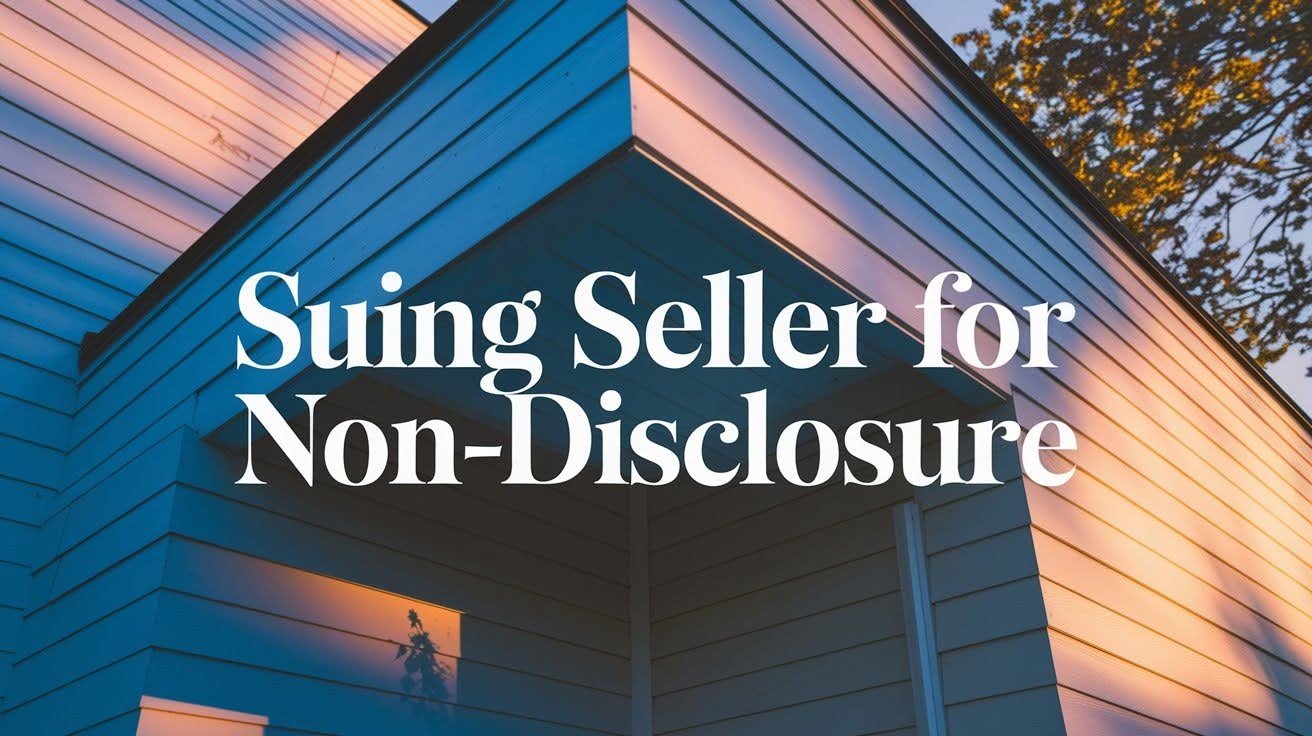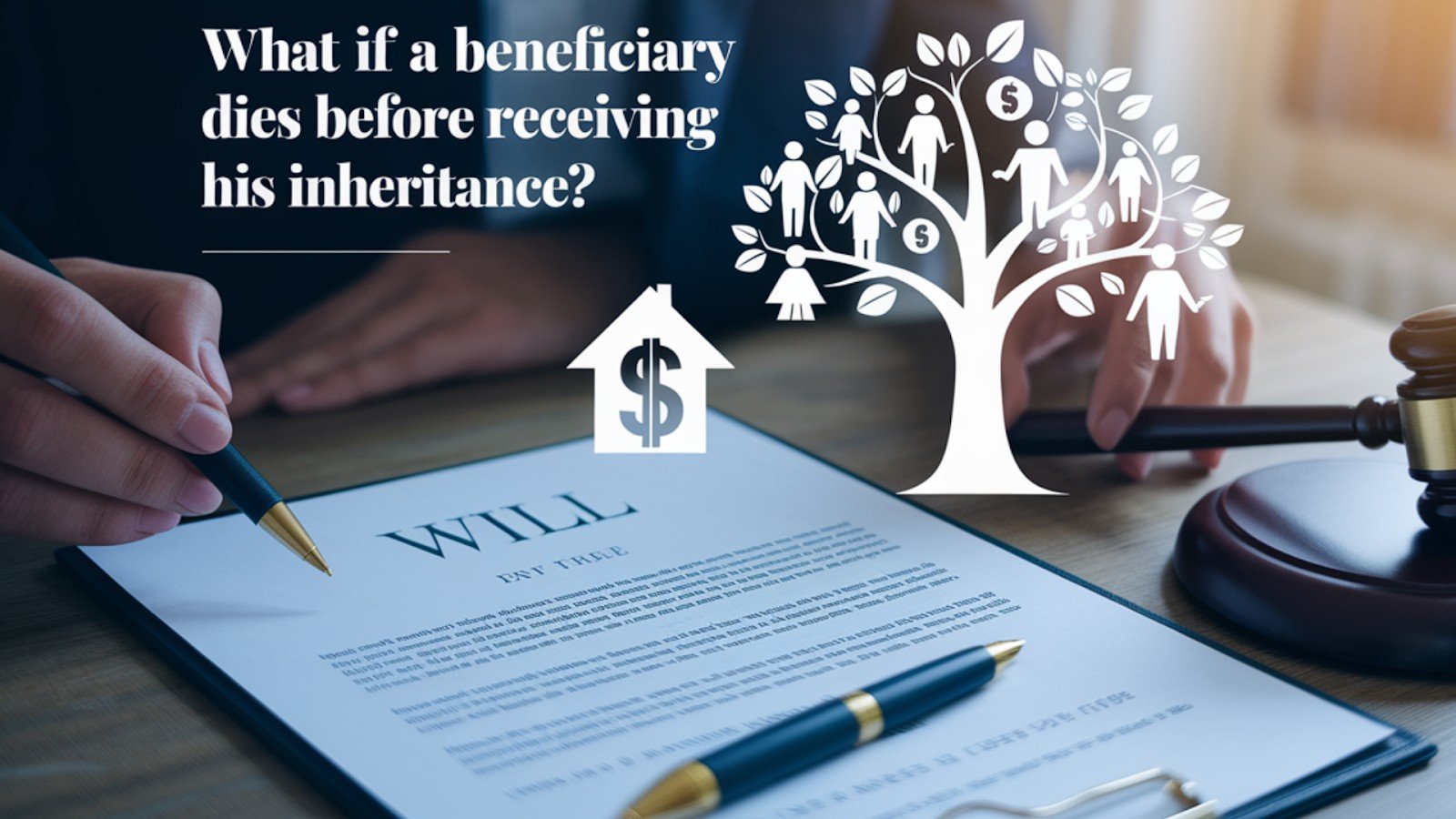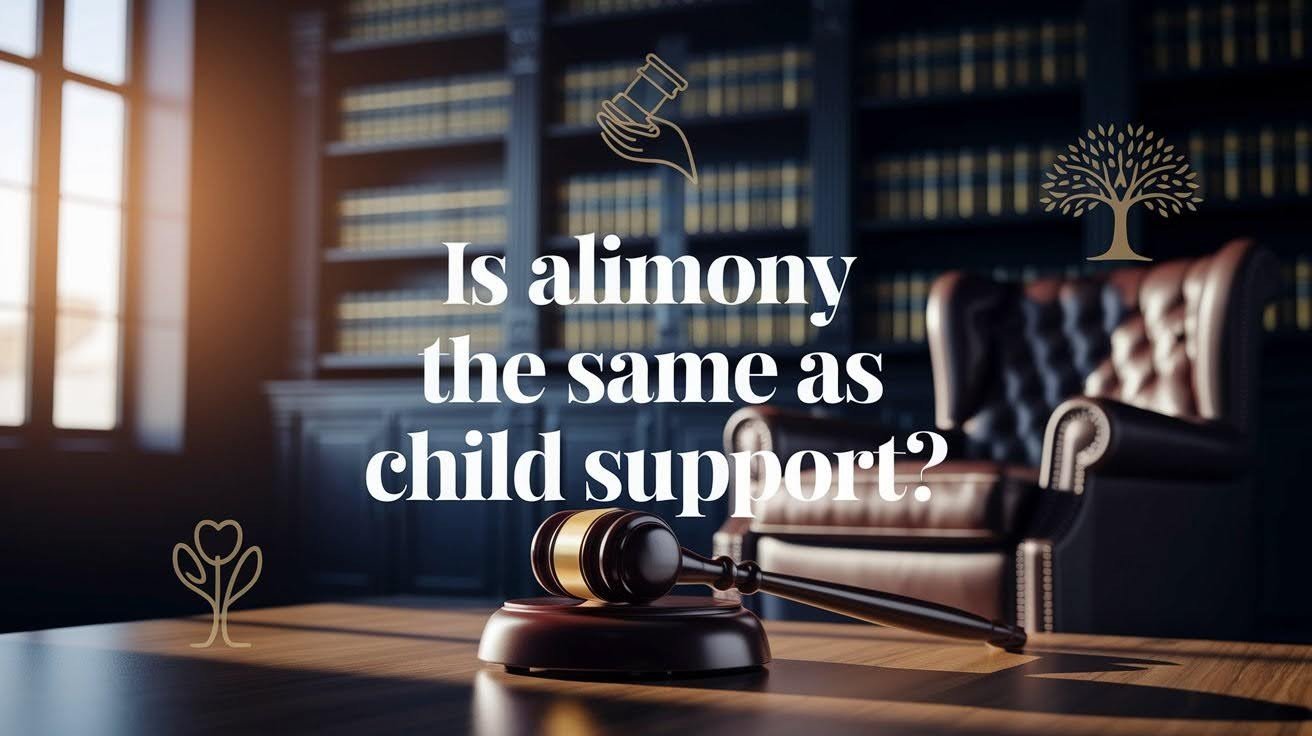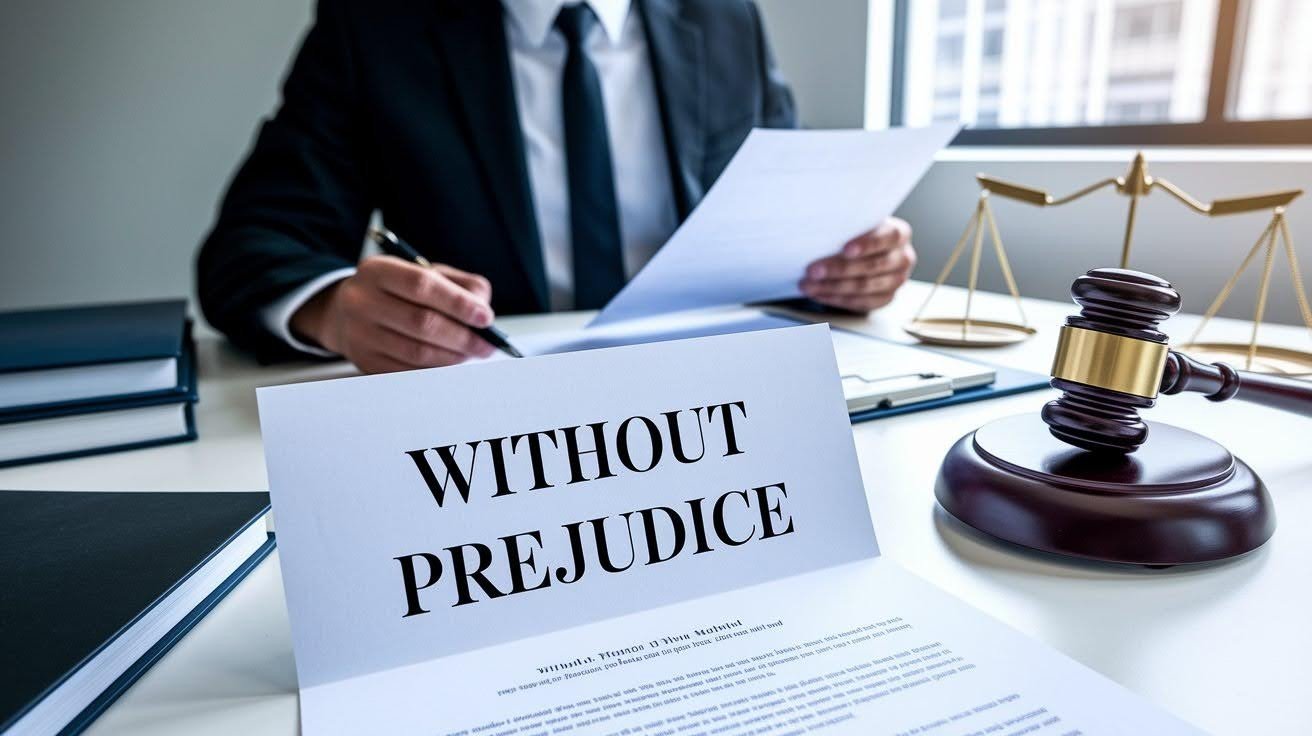You just bought your ideal house. Major water damage can be found hidden just behind fresh paint. After three months, this discovery happened. You have never been told about this problem. The seller hid it away from you. Now you’re facing thousands of dollars in repairs, plus you wonder if you can take legal action.
Real estate non-disclosure happens in situations where important problems are hidden from buyers on the part of sellers. These are hidden issues that can cost you some money. The issues can also put your family at risk. But can you actually win in court against the seller?
Several key factors determine the answer. Proof of the fact that the seller knew about the problem is needed. That the issue seriously affects the safety or value of your home must be shown.
Can You Sue a Seller for Non-Disclosure?
Yes, you can sue a seller who hides important problems from you during a home sale. But winning your case requires meeting specific legal requirements.
Yes, You Can Sue, But Only Under Specific Conditions
The law protects buyers from sellers who lie or hide major problems. Most states require sellers to tell buyers about known defects that affect the home’s value or safety. When they don’t, you have legal rights.
But suing the seller for non-disclosure isn’t automatic. You must prove the seller actually knew about the problem before the sale. This is often the hardest part of your case. Just because a problem exists doesn’t mean the seller knew about it.
You also need to show that the hidden problem caused you real financial harm. Small cosmetic issues usually won’t support a lawsuit. The damage must be significant enough to justify legal costs and court time.
When Lawsuits Are Worth Pursuing?
Some situations make strong cases for legal action. Major structural problems like foundation cracks or roof leaks can cost tens of thousands to fix. If you can prove the seller knew and hid these issues, you have a good chance of winning.
Safety hazards create especially strong cases. Hidden electrical problems, gas leaks, or toxic materials put your family at risk. Courts take these cases seriously because they involve public safety, not just money.
Strong paperwork helps your case tremendously. Repair estimates, inspection reports, and contractor bills showing the seller knew about problems make winning more likely. Email chains or text messages where sellers discuss hiding issues can seal your victory.
When Lawsuits May Not Be Worth It?
Minor problems rarely justify the cost of going to court. Squeaky floors, small wall cracks, or outdated fixtures won’t win you much money. Legal fees often cost more than fixing these small issues yourself.
You need proof that the seller knew about the problems. If you can’t show they knew, your case becomes much weaker. Sellers can claim they never noticed issues, making your lawsuit harder to win.
“As is” sales with proper paperwork protect sellers more. When you agree to buy a home “as is,” you accept most existing problems. However, sellers still must tell you about major safety issues and structural defects.
Gathering Strong Evidence for Your Case
Your chances of winning increase dramatically when you have clear proof. Take detailed photos, keep inspection reports, and save any contractor estimates for repairs. These records show the extent of the damage and help establish financial harm.
Collect communication evidence too. Emails, text messages, or written notes from the seller can reveal their knowledge of the issues. Even casual mentions of repairs they knew about can strengthen your claim.
Keep everything organized. A well-documented timeline of discovery, repairs, and communication with the seller makes it easier for your attorney to present a compelling case in court.
Choosing the Right Attorney
Finding an experienced real estate attorney is crucial. Not all lawyers specialize in non-disclosure cases, so seek someone familiar with your state’s disclosure laws and local court trends.
During your initial consultation, discuss your evidence and potential outcomes. A good attorney can realistically assess whether your case is worth pursuing and explain strategies to maximize recovery.
Trust and communication matter. Your attorney should guide you step by step, answer questions clearly, and ensure you feel confident and informed throughout the process.
Common Non-Disclosure Issues That Lead to Lawsuits
Certain types of hidden problems lead to successful lawsuits more often than others. These issues typically involve safety risks or expensive repairs.
Structural and Safety Issues
Foundation problems top the list of serious non-disclosure cases. Cracks, settling, or water seepage can cost $20,000 or more to fix properly. These problems affect your home’s basic structure and safety.
Roof damage and leaks create major expenses quickly. Hidden water damage can spread through walls and floors, creating mold and rot. When sellers hide roof problems, repair costs can reach tens of thousands of dollars.
Electrical and plumbing defects put your family at risk. Faulty wiring can cause fires. Bad plumbing can flood your home. These safety issues make strong cases for suing the seller for non-disclosure, especially when the seller knew about the dangers.
Environmental and Health Hazards
Mold problems create serious health risks for your family. Hidden mold behind walls or in crawl spaces can trigger allergies and breathing problems. When sellers know about mold but don’t tell buyers, lawsuits often succeed.
Soil contamination affects your property value and health. Underground fuel tanks, chemical spills, or industrial waste can make your land unsafe. These problems cost enormous amounts to clean up properly.
Natural disaster risks like earthquake faults or flood zones must be disclosed in most states. When sellers hide these location-based risks, buyers face higher insurance costs and safety concerns. Courts often side with buyers in these cases.
Financial and Legal Issues
Property tax problems can cost you thousands in back payments and penalties. When sellers hide tax liens or assessment disputes, you inherit their financial mess. This creates grounds for legal action against dishonest sellers.
Boundary disputes with neighbors can be expensive to resolve. Survey problems, easement issues, or fence line disagreements should be disclosed before the sale. Hidden boundary problems often lead to successful buyer lawsuits.
Building code violations can force expensive updates to your home. Unpermitted additions, electrical work, or plumbing changes create legal liability. When sellers hide these violations, suing the seller for non-disclosure often works in your favor.
Costs vs. Benefits Analysis
Before filing a lawsuit, carefully weigh your potential costs against possible recovery amounts.
Legal Costs and Expenses
| Cost Category | Typical Range | Payment Options |
| Attorney Fees | $250-500/hour | Hourly or contingency (25-40%) |
| Court Filing Fees | $200-500 | Upfront payment required |
| Expert Witnesses | $2,000-5,000 | Paid during case preparation |
| Property Inspections | $500-2,000 | Required for evidence |
| Document Preparation | $500-1,500 | Legal research and filing |
Your total legal costs can easily reach $10,000-25,000 for a full trial. Many attorneys work on contingency, meaning they take a percentage of your winnings instead of hourly fees. This reduces your upfront costs but cuts into your final recovery.
Potential Recovery Amounts
| Recovery Type | What It Covers | Typical Amounts |
| Repair Costs | Actual fix expenses | $5,000-50,000+ |
| Property Value Loss | Market value decreases | 10-30% of home value |
| Legal Fee Recovery | Your attorney costs | Varies by state law |
| Punitive Damages | Punishment for fraud | 1-3x actual damages |
Your recovery depends on proving actual financial harm. Simple repair costs are easiest to calculate and win. Property value decreases require expert appraisals but can mean larger awards.
Factors That Affect Case Value
The strength of your evidence directly affects your case value. Clear proof of seller knowledge and extensive damage documentation lead to higher settlements. Weak evidence results in lower offers or lost cases.
Local court history matters significantly. Some judges and juries favor buyers more than others. Your attorney should know local trends and adjust expectations accordingly. Past similar cases in your area predict likely outcomes.
Most cases settle before trial. Settlements typically range from 40-70% of your total damages. Going to trial risks losing everything, but can result in full recovery plus punitive damages. Your attorney will help you decide between settlement offers and trial risks.
Tips on Special Considerations and Limitations
Special considerations and limitations highlight unique factors or restrictions that must be accounted for when making decisions or plans:
- Understand “As Is”: You accept the property in its current condition, but the seller must still disclose known major defects and safety hazards.
- Know Your Protection Rights: Disclosure laws apply to structural issues and environmental hazards, and fraud protection remains in effect.
- Avoid Misconceptions: “As is” does not let sellers lie; inspections are allowed, and major safety issues must be disclosed by law.
- Be Aware of Statute of Limitations: Most states allow 2-6 years from discovery to file claims, not from the purchase date.
- Leverage the Discovery Rule: Time limits start when a reasonable person discovers the problem; hidden issues or seller concealment can extend deadlines.
- Act Promptly: Evidence fades, witnesses forget, and document preservation becomes more difficult over time.
- Check Agent and Broker Liability: Agents who knew about problems, failed to investigate, or misrepresented conditions can be held responsible.
- Handle Dual Agency Carefully: When one agent represents both buyer and seller, extra care is needed due to conflicts of interest in disclosure duties.
- Follow Professional Standards: Real estate licenses require honesty, state boards can punish misconduct, and insurance may cover buyer damages.
Conclusion
Suing the seller for non-disclosure can be worth it when you face major problems and have strong evidence. Focus on significant safety issues or expensive structural defects. Make sure you can prove the seller knew about problems before the sale.
Legal costs are high, but contingency fee arrangements help many buyers. Settlements often provide 40-70% of your damages without trial risks. Strong documentation and expert witnesses improve your chances significantly.
Time limits matter, so don’t wait too long to act. Consult with an experienced real estate attorney within the first year of finding problems. They can evaluate your case strength and explain your legal options clearly.
Frequently Asked Questions
How long do I have to sue a seller for hiding problems?
Most states give you 2-6 years from when you find the problem. The clock starts when you reasonably should have found the issue, not your purchase date.
Can I sue if I bought the house “as is”?
Yes, but it’s harder. Sellers still must tell you about known major defects and safety hazards, even in “as is” sales with proper paperwork.
What proof do I need that the seller knew about the problems?
You need evidence like repair estimates, contractor communications, insurance claims, or witness statements showing the seller knew about the defects before selling.
How much does it cost to sue a seller for non-disclosure?
Legal costs range from $10,000 to $25,000 for full trials. Many attorneys work on contingency fees, taking 25-40% of your winnings instead of hourly payments.
What damages can I recover in a non-disclosure lawsuit?
You can typically recover repair costs, property value decreases, and sometimes legal fees. Punitive damages are possible in fraud cases with especially bad seller behavior.







